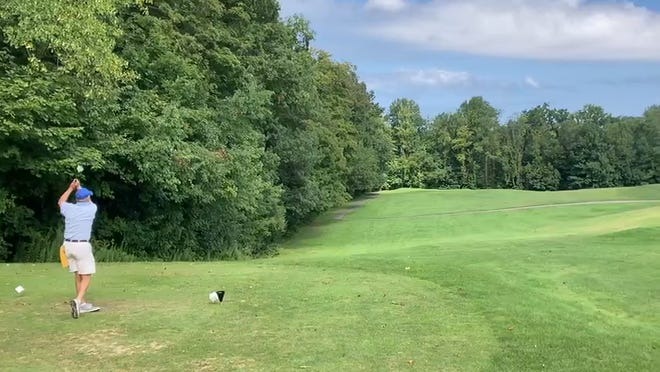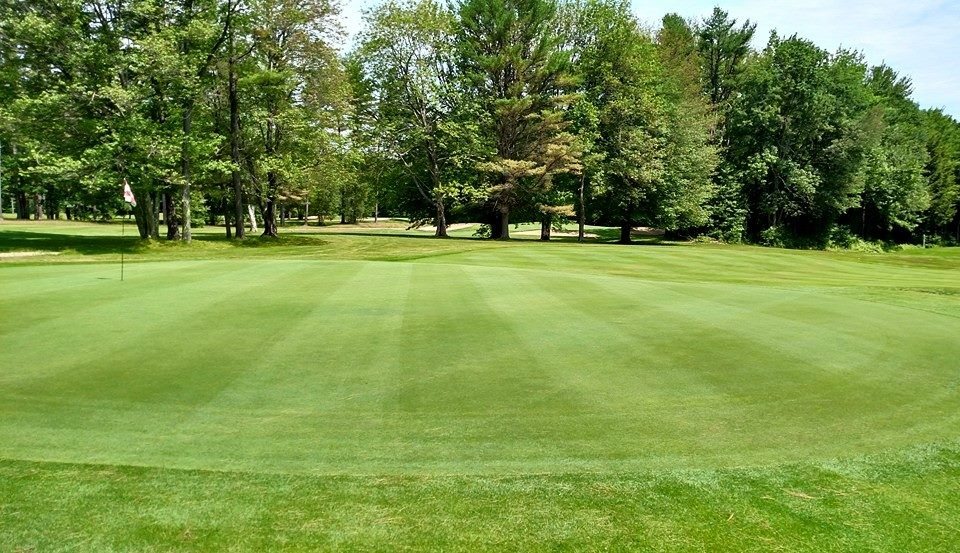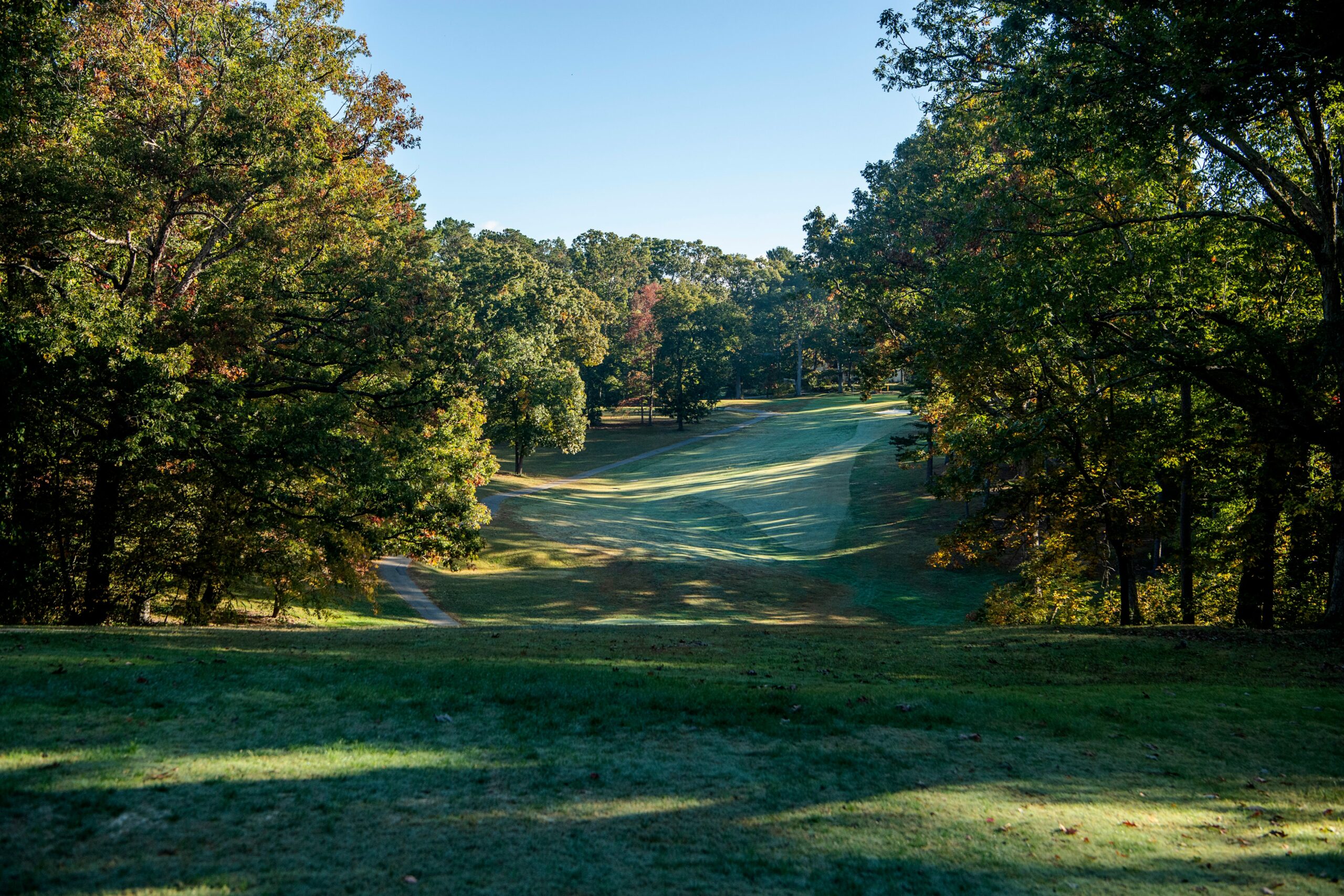ASHEVILLE, N.C. — The 16th hole was the worst one.
That was the consensus during a 2022 tour of the Asheville Municipal Golf Course, which documented what the city called “steadily degrading conditions” over the last several years. At that point, the course had only spent a few weeks under a new management agreement with Commonwealth Golf Partners, which took over the course on Oct. 1, 2022. It had spent the 10 years prior with former operator Pope Golf.
Now, almost exactly a year later, Mike Bennett, one of the operators with Commonwealth, said that the same hole has gone from the worst condition to one of the best.
The 18-hole golf course, affectionately known as “Muni,” was designed by Hall of Fame golf architect Donald Ross and opened for play in 1927. It remains the last “affordable” public fee course in Asheville and is home to Skyview Golf Tournament, the longest-running professional tournament in the country owned and operated by Black residents, which held its 63rd annual tournament in July.
“We like to say (the 16th hole) went from last to first,” Bennett said of the year’s transition.
It needed the full gambit of improvements — guided in part by a $25,000 master plan, prepared by golf architect Kris Spence, a “roadmap” for restoring the relevant Donald Ross features of the course, maintaining the integrity of a historic design.
A framed copy of the 2023 master plan hangs in the Muni’s clubhouse, which just saw its own interior upgrades. On Oct. 18, Bennett traced some of the map’s faint outlines, delineating the course’s current condition, bolder lines indicating the original edges of the design; abandoned bunkers to be restored or shifted, some buried now at the edge of the tree line or faded to faint impressions in the grass.
$3.5 million in renovations, herd of goats
It’s just one piece of the ongoing $3.5 million in planned course renovations. The city has secured $2.9 million in funding to dedicate to upgrades and repairs. About $850,000 has been spent, said Chris Corl, the city’s director of Community and Regional Entertainment Facilities, with a bulk of the funds reserved for incoming stormwater remediation projects, which carry a hefty price.
The stormwater project will be bid out in the next two weeks, with construction beginning in late November or December. It should address the sinkholes scarring areas of the course, and overhaul holes 10 and 11, which Bennett described as still “pretty rough.”
The 16th green was a prime example of the issues that plagued the 122-acre course in East Asheville. It was patchy in places. The sod was fraying to dirt at its edges. A makeshift path had formed where golf carts were cheating up the fairway and nuances of the original Donald Ross design blurred after years of shifting mowing patterns.
But a more recent visit to the course finds wooden posts discouraging forays from the asphalt cart path. A small staircase ascends to the green, and the newly laid bent grass — salvaged from a nearby local course — is resodded and whole.
It was in “terrible condition,” Lonnie Gilliam said of Hole 16. He plays at the Muni almost five days a week and has been golfing there since the 1960s. “Now it’s perfect … pristine is the word I describe it as.”
Before the Commonwealth takeover, Gilliam said conditions were “horrific.” There’s a term in golf, “dog track,” he said, slang for a poorly maintained course. “It had gotten to that level.”
“It is amazing what has happened since the changeover in management. Everything I have to say is positive about the conditions, what they’re doing, how they’ve done due diligence on just about everything that golfers complained about when they had their first meeting (with them),” he said.
In the months since Commonwealth’s contract with the city began, a partnership between Bennett and Peter Dejak, Corl said the “continued, ongoing” maintenance and efforts from new management is noticeable, from clearly defined fairways; rebuilt and sodded greens, tee boxes and fairways; bunker restoration; repaired cart paths and more. The removal of 111 trees, and pruning of more than 80 others, means improved sightlines and more sunlight for grass growth.
A herd of goats was brought in to eat away at underbrush and invasive species.
Golf fees, revenue increased
There’s a new fleet of golf carts on lease, plus a new rate structure, which saw increases across the board, but maintained discounts for city residents.
Rates vary on a number of factors — including resident status, time of day, weekday or weekend, and play with cart — but Corl said average facility revenue per round in 2022 was $23.16, up to $28.67 in 2023.
Considering the most expensive round (Saturday, for the full 18 holes), it was $45 for everyone in 2022. Now it’s $45 for residents, $65 for non-residents.
In past years, the course averaged 41,600 starts a year. This year, Corl said, they’re estimating 48,000 starts, but expect to grow to about 53,000 in 2024.
Rather than a traditional lease agreement, like the one the city had with Pope Golf, the licensing and management agreement shares loss and profit between Commonwealth and the city.
“We’re only a year into it, but it’s gone better than I could have ever expected,” Bennett said.
According to Bennett, revenue is up 24% for January through September when compared to last year.
“I think all of the locals who have been playing here for years are excited just to see growth and change, and good things happening,” said Pat Warren, the course’s general manager.
They haven’t seen anything like it, he said, in the last 20 years.
‘Money is being spent properly’
Paul Bonesteel has been playing at the Muni since 1997. He’s there about twice a week.
Bonesteel is the president of “Friends of Asheville Muni,” a new nonprofit and fundraising partner, and is the documentary filmmaker and director behind “Muni,” a “love letter to the game of golf,” which was released in 2020 and featured on Golf Channel and PBS.
On a weekday in October, he had plans to play nine holes. On foot, carrying his own bag, it will run him about $15. Another $15 if he decided to rent a cart.
“It’s just fantastic to have a golf course in the city limits of Asheville that’s convenient, that’s accessible, and I mean that both physically and economically, to people who live here,” he said.
But it’s more than affordability that keeps Bonesteel coming back. “It’s still the vibe,” he said. Everyone’s out there, from “scratch golfers to people just starting.” There’s plenty of people who are on the course almost every day, and users who have dedicated decades of play to the Muni, one of the oldest in Western North Carolina, listed on the National Register of Historic Places.
Gilliam described a sense of “fellowship,” particularly for those who play almost daily, and have for decades. The Skyview tournament was long a “highlight” and gathering place for African American families, he said. At this most recent tournament, some players were “shocked” by the “tremendous” improvements, and were already making plans to return the next year.
In the last year, Bonesteel said the work has been noticeable, both “quality” and “efficient,” even with some of the most impactful stormwater improvements yet to come.
“People I play with and the folks that I talk to out there … see that the money is being spent properly. That really makes people feel good,” he said. “Looking at the original plans, and having that level of concern for the historical quality as well as the environmental quality, it’s noticeable and impressive.”
There’s always more to be done, Bonesteel added, and the course is “far from finished,” but there are open lines of communication between course users, management and the city that haven’t been there for years.
“I’ve never seen it so transparent,” he said. The old sense used to be, “someone is making a lot of money here and it’s not the golf course.”
“That’s gone now,” Bonesteel said. “People feel like they are getting what they paid for.”
City of Asheville v. Pope Golf
In the days after Commonwealth took over course operations, in October 2022, the city filed a lawsuit against Pope Golf, alleging deteriorating course conditions, destruction of property and $340,830 in outstanding lease payments to the city.
A year later, the litigation drags on. At its center are the significant stormwater drainage issues, which Pope said in September 2022 is the reason behind not only the course conditions but his termination of lease payments.
Pope Golf submitted an answer to the complaint in December, which denies almost all allegations and calls for the court to dismiss the complaint. The document reiterates Pope’s belief that issues, including the drainage problems, were within control of the city, and outside control of Pope Golf.
An order for a mediated settlement conference was filed with the court in March, with a deadline for completion of mediation of July 15. If the case is not settled out of court, the order names a tentative trial date of Nov. 13.
City Attorney Brad Branham said the parties are in the process of “moving the trial date to accommodate schedules.”
It has not yet been set, he told the Citizen Times in an Oct. 18 email, but will likely be in May of next year. A mediator has been selected, but no dates have been set. This will need to occur prior to trial.
Tree plantings and pollinators
While the news of planned tree removal was cause for some community distress, after action from area environmentalists and neighbors, plus conversations with the city and operators, the number of downed trees was reduced from 157 to 111. More than 80 others were pruned.
This number was already a decrease from initial U.S. Golf Association tree evaluation and report, which suggested 500-plus trees for removal. Removal was necessary for essential renovations to the course, improvements to golf play and longevity of existing trees, the city said.
As part of the process, and to ensure no net loss of total long-term tree canopy, Corl said they initiated a neighborhood tree replanting program, in partnership with area nonprofit Asheville GreenWorks, which offered trees at no cost to surrounding property owners, and assistance in planting.
Corl said deliveries started that week and that 55 trees would be replanted through the program.
The course is also working with GreenWorks on a new tree nursery program and has identified three sites throughout the course where the nonprofit will be able to cultivate trees on the property.
“Instead of planting permanent trees on the property, which in time will grow large and cause similar problems which caused for the removal of trees over the winter, the nursery program will result in trees being removed from the course when they reach proper planting size for their permanent homes,” according to the Muni website.
In total, it’s estimated that the sites will house over 200 trees to be made available to area nonprofits and government agencies for low or no cost.
“It’s definitely pretty unique for a golf course, and it makes sense,” Bennett said. “Most courses have spots like this that could be utilized.”
Friends of the Asheville Muni recently wrapped an over $4,000 fundraiser to bring pollinator plantings to the course, Bonesteel said. November volunteer days will be held for planting, bringing about two acres of pollinators to the property.
The new day-to-day
While outcomes of the capital project overhauls may be among the most noticeable changes, Bennett said it’s the day-to-day operations they are most invested in, “creating the ability to maintain the golf course like it’s supposed to be.”
That means new agronomy practices that are going to help “long term,” Bennett said, and tools, machinery and staffing that will “pay dividends for years.”
In the calendar year, Corl said they reduced water used from 12.5 million gallons used to 5.5 million, even before the larger planned stormwater projects, by eliminating leaks and installing a localized course weather station and water sensors inside all 18 greens.
“Visually, it looks stunning. It looks so much more like a real golf course and a traditional Donald Ross,” Bennett said. “It’s much more playable and more of how it was intended to be played.”
Muni by the numbers:
1927: Year built
122: Acres
18: Holes
$3.5 million: Capital project budget
111: Trees removed
10: Rebuilt bunkers
4 hours, 6 minutes: Average time to play 18-hole round
41,600: Starts a year
Source: City of Asheville
Sarah Honosky is the city government reporter for the Asheville Citizen Times, part of the USA TODAY Network.











